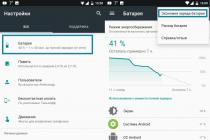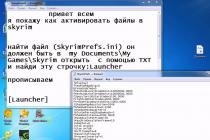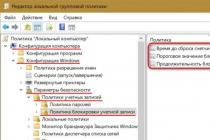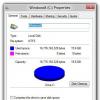Contents of delivery:
- Smartphone
- Accumulator battery
- USB cable
- Headphones
- Network adapter
- Manual
- Warranty card
Introduction
Alcatel has lines mobile phones: IDOL, POP and HERO. In addition, for example, in POP, there are, let's say, subsections POP S and POP C. The first ones are relatively expensive devices, and the second ones are budget ones, but the larger the number at the end, the cooler the gadget. In this case, we will consider POP C9, i.e. the device currently at the head of the POP Cx subsection.
Design, dimensions, controls
Despite the bright design of smartphones Alcatel POP C9, in general, the devices have a typical "average" design of all phablets: large sizes, rounded shapes, a lot of plastic and chrome inserts on the edge, beloved by all manufacturers. The gadget resembles some Samsung, Fly, and Huawei, and practically does not differ from POP C7.
Dimensions POP C9 - 150.95 x 77.5 x 9.5mm, i.e. not at all small and thin. But most of all, the weight is surprising - almost 190 grams. I had a metal 6-inch Explay Diamond monster on my review, it weighed 185 grams. It seems that inside the C9 is lead battery. Joke. The frames on the right and left are relatively thick - 5 mm each, so it is not as comfortable in the hand as we would like. However, thanks to the sloping edges, the ergonomics of the design are slightly improved.

The front side is covered with glass. It is durable, and during testing only micro-scratches appeared on it. It should be borne in mind that the smartphone "lived" in a backpack with other devices. Inside lining is white. The display surface is not too easily soiled, apparently, there is an oleophobic coating, the finger slides without problems.


The edging, as I said earlier, is made of chrome-plated plastic, rises slightly above the screen, thereby partially protecting the surface. Back cover fixed, white, glossy. It seemed slippery to me. Fingerprints remain on it, but are not particularly noticeable.

The company's website states that POP C9 is available in several colors: pink, red, blue, white, black, gray. However, as always happens with new models, firstly, the smartphone is sold only in two networks cellular communication, secondly, there is only a gray device.

Assembled POP C9 perfectly: no squeaks, no backlash, you can feel the solidity of the case. When squeezed in the hand, the phone case does not crackle, when pressing on the back central area, the cover is not pressed through to the battery.

On top is the speaker. The volume is slightly above average, in noisy places it may be hard to hear, especially in the subway, on the street you have to turn the volume up to the maximum. The timbre is pleasant, not booming, the interlocutor is heard legibly and clearly. Echo is missing. In general, quite a good speaker, but the volume could be a little higher.

To the left of the speaker is the front camera, to the right are the light and proximity sensors, they work correctly.
Below - the usual buttons "Back", "Home" and "Menu". There is no backlight, so the buttons are hard to see at night.
At the bottom are micro-USB and the main microphone, at the top - 3.5 mm audio jack for headphones or a headset.
The power button is located on the right edge just below the center. It is almost recessed into the case, the pressure is soft, the stroke is small. The same type of volume rocker key, it is slightly higher. Even higher is a slot for a memory card. It closes with a plastic cap.


Two slots for SIM-cards are located on the left edge under a plastic cover.

MicroSIM type connectors, both slots function in 3G, but SIM cards operate according to the following scheme: 3G-SIM1 / 2G-SIM2 or 2G-SIM1 / 3G-SIM2. Switching between 2G / 3G takes about 10 seconds, that is, it will not work quickly.

On the reverse side of the POP C9: a second microphone, a camera that rises a couple of millimeters above the body and is framed by a chrome-plated plastic rim, a flash and a speakerphone.
Comparative dimensions:

Alcatel and LG Flex

Alcatel and Samsung Galaxy Note II

Display
Manufacturers still can't calm down, so they use huge screen sizes in almost every second of their products. IN Alcatel OneTouch The POP C9 has a 5.5-inch (139mm) display. The physical size is 69x121 mm, the bezel is 11 mm at the top and 18 mm at the bottom.
The resolution of 540x960 pixels for such a diagonal, it seems to me, is not enough, although the picture looks good, and pixelation at a distance of 30-40 cm is imperceptible. Density - 200 pixels per inch.
The backlight brightness of the display matrix is adjusted either manually or automatically. The range is relatively wide, but at the minimum brightness the glow is still large. The maximum brightness is enough for comfortable reading on the street, while in the sun the screen saves only a diagonal of 5.5 inches.
The matrix is made using IPS technology, unfortunately, not OGS: between protective glass and the screen has an air gap. The color rendition is natural, the saturation is calm. The viewing angles are wide, but under certain inclinations the color rendition is broken: it goes into blue, then into yellowness. All in all, typical behavior inexpensive IPS matrices.
The capacitive touch layer works out up to 5 simultaneous touches. The sensitivity is good.

White color

Black color




Viewing angles and color reproduction


Battery
This model uses a 2500 mAh lithium-ion (Li-Ion) battery. The battery is non-removable.
The manufacturer indicates his data on the "life" of the battery, which I believe, since our results came out approximately the same:
- talk time: up to 8 hours (2G), 4 hours (3G)
- standby time: 560 hours (2G), 550 hours (3G)
- operating time music player: 24 hours
In the 720p video playback mode, the device worked for about 5 hours. The average time is about 10-12 hours without active use of 3G.
The device takes about 3.5 hours to charge.
In the settings there is an item called "Super Energy Saving". It is very similar to the functions in HTC One M8 and samsung galaxy S5. When almost all applications are turned off, the brightness of the matrix backlight decreases, and only the main ones become available to you: SMS, calls, calendar, address book. In this mode, Alcatel works for about 3 days.



Communication options
Smartphone operates in cellular networks 2G (GSM/GPRS/EDGE, 850/900/1800/1900 MHz) and 3G (850/9001800//2100 MHz).



In stock Bluetooth version 4.0 for file transfer and speech. There is a wireless WiFi connection IEEE 802.11b/g/n. The device, of course, can be used as an access point (Wi-Fi Hotspot) or modem.


The device has GPS. In the "cold" mode, the first satellites are determined in less than one minute, in the "hot" mode - three times faster. Sensitivity is average: indoors it can hardly find a couple of satellites, near a window - up to 4, outdoors the device instantly finds more than 8 satellites. I did not observe any problems with GPS, everything works fine.


Memory and memory card
1 GB installed inside random access memory. On average, a little less than 600 MB is free. 4 GB are allocated for data storage, of course, about two are free. There is a slot for a memory card. The maximum volume is 32 GB.


Camera
As befits a real “android”, Alcatel C9 has two cameras: the main one is 8 MP, the front one is 1.3 MP (on the official website it is indicated that 2 MP). There is a small LED flash.
The quality of the camera is mediocre, mainly complaints about color reproduction and narrow dynamic range. It is worth praising the camera for accurate focus, for the minimum focusing distance of about 7 cm, for the cool blurring of the background thanks to the F2.2 aperture.
The front camera takes photos at a resolution of 720x1280 pixels. The quality is not bad. Video - 640x480 pixels at 10 fps.
The camera can record FullHD video at 30 frames per second, which is good news. Autofocus is very fast, induced from 3 cm, decent sharpness. The sound is mono, clear.







EXIF information
Video file characteristic:
- File Format: 3gp
- Video codec: AVC, 17 Mbps
- Resolution: 1920 x 1080, 30 fps
- Audio codec: AAC, 128 Kbps
- Channels: 1 channel, 48 kHz
Photo examples:


















Sample photo on the front camera:

Performance and software platform
Most of these devices have a Taiwanese MediaTek chip. Smartphone Alcatel OneTouch C9 is no exception. It uses the most common among "state employees" in Lately MT6582 chipset: Cortex-A7 processor, 28 nm, 4 cores at 1.3 GHz, Mali-400MP2 graphics accelerator with a clock frequency of 400 MHz.
For comfortable operation of the device, this processor is more than enough. There are problems with games, but only with powerful ones like Asphalt 8. The device does not bug, does not slow down, and works relatively smoothly.
Brief information about phone parameters and performance tests (Quadrant Test, Antutu Test):






The machine has an operating system Google Android ancient version 4.2.2. I'm not sure that 4.3 will be released, and even more so 4.4. Although I personally do not see any point in them, especially in inexpensive gadgets. Branded shell is essentially non-existent here. The icons of the main screen, settings and unlocking of the display have been slightly changed (the “unlock” button “floats” in the circle, which must be shifted to the sides).
Multimedia
The device has a standard music and video player, radio. The volume of the speaker is slightly above average, the quality was not pleasant: it wheezes, there are overloads, the sound is not very clear. The sound in the headphones has a high volume, the quality is good, there are no complaints. The video device plays in FullHD resolution.




Conclusion
Today Alcatel OneTouch POP C9 can be found in two mobile phone stores for the same price - 7,990 rubles. draw conclusions from similar inexpensive devices very difficult, because you can’t tell anything interesting about them. All C9 parameters are average: processor, memory, camera, software chips. Appearance also common, in addition, the device is available only in gray.
pros:
- Excellent build
- not a bad time battery life
- Good quality video, cool macro photography
- IPS matrix
- Both sim slots work in 3G
Minuses:
- Large dimensions and heavy weight
- The speaker wheezes a little at maximum volume
- Low screen resolution
Characteristics:
- Class: smartphone
- Form factor: monoblock
- Body materials: plastic
- Operating system: Google Android 4.2.2
- Network: GSM/GPRS/EDGE, UMTS
- Processor: four cores, 1300 MHz, MTK6582
- RAM: 1 GB
- Storage Memory: 4 GB
- Interfaces: Wi-Fi (b / g / n), Bluetooth 4.0, microUSB connector (USB 2.0) for charging / synchronization, 3.5 mm for a headset
- Screen: capacitive, IPS 5.5 "" with a resolution of 540x960 pixels
- Camera: 8 MP autofocus + 1.3 MP flash
- Navigation: GPS
- Extras: accelerometer, proximity sensors, FM radio
- Battery: non-removable, capacity 2500 mAh
- Dimensions: 150.95 x 77.5 x 9.5mm
- Weight: 189g
- Price: from 7,990 rubles (Q2 2014)
Information about the make, model, and alternative names of a particular device, if any.
Design
Information about the dimensions and weight of the device, presented in different units of measurement. Used materials, suggested colors, certificates.
| Width Width information refers to the horizontal side of the device in its standard orientation during use. | 77.5 mm (millimeters) 7.75 cm (centimeters) 0.25ft 3.05in |
| Height Height information refers to the vertical side of the device in its standard orientation during use. | 150.95 mm (millimeters) 15.1 cm (centimeters) 0.5 ft 5.94in |
| Thickness Information about the thickness of the device in different units measurements. | 9.5 mm (millimeters) 0.95 cm (centimeters) 0.03 ft 0.37in |
| Weight Information about the weight of the device in different units of measurement. | 189 g (grams) 0.42 lbs 6.67oz |
| Volume Approximate volume of the device, calculated from dimensions provided by the manufacturer. Refers to devices with the shape of a rectangular parallelepiped. | 111.14 cm³ (cubic centimeters) 6.75 in³ (cubic inches) |
| Colors Information about the colors in which this device is offered for sale. | The black |
| Housing materials The materials used to make the body of the device. | Plastic |
SIM card
The SIM card is used in mobile devices to store data that certifies the authenticity of mobile service subscribers.
Mobile networks
A mobile network is a radio system that allows multiple mobile devices to communicate with each other.
Mobile technologies and data rates
Communication between devices in mobile networks is carried out through technologies that provide different data transfer rates.
Operating system
The operating system is the system software that manages and coordinates the operation of the hardware components in the device.
SoC (System on a Chip)
System on a chip (SoC) includes all the most important hardware components of a mobile device in one chip.
| SoC (System on a Chip) System on a chip (SoC) integrates various hardware components such as processor, graphics processor, memory, peripherals, interfaces, etc., as well as the software necessary for their operation. | MediaTek MT6582 |
| Technological process Information about the technological process by which the chip is made. The value in nanometers measures half the distance between the elements in the processor. | 28 nm (nanometers) |
| Processor (CPU) The main function of the processor (CPU) mobile device is the interpretation and execution of instructions contained in software applications. | ARM Cortex-A7 |
| Processor bit depth The bit depth (bits) of a processor is determined by the size (in bits) of registers, address buses, and data buses. 64-bit processors have higher performance than 32-bit processors, which, in turn, are more productive than 16-bit processors. | 32 bit |
| Instruction Set Architecture Instructions are commands by which the software sets/controls the operation of the processor. Information about the instruction set (ISA) that the processor can execute. | ARMv7 |
| First level cache (L1) Cache memory is used by the processor to reduce access time to more frequently accessed data and instructions. L1 (level 1) cache is small and much faster than both system memory and other cache levels. If the processor does not find the requested data in L1, it continues to look for them in the L2 cache. With some processors, this search is performed simultaneously in L1 and L2. | 32 kB + 32 kB (kilobytes) |
| Second level cache (L2) L2 (level 2) cache is slower than L1, but in return it has a larger capacity, allowing more data to be cached. It, like L1, is much faster than system memory (RAM). If the processor does not find the requested data in L2, it continues to look for it in the L3 cache (if available) or RAM. | 512 kB (kilobytes) 0.5 MB (megabytes) |
| Number of processor cores The processor core executes program instructions. There are processors with one, two or more cores. Having more cores increases performance by allowing many instructions to be executed in parallel. | 4 |
| Processor clock speed The clock speed of a processor describes its speed in terms of cycles per second. It is measured in megahertz (MHz) or gigahertz (GHz). | 1300 MHz (megahertz) |
| Graphics Processing Unit (GPU) Graphics Processing Unit (GPU) handles calculations for various 2D/3D graphic applications. In mobile devices, it is used most often by games, consumer interface, video applications, etc. | ARM Mali-400 MP2 |
| Number of cores GPU Like the CPU, the GPU is made up of several working parts called cores. They handle the graphical calculations of different applications. | 2 |
| GPU clock speed The speed of work is clock frequency GPU, which is measured in megahertz (MHz) or gigahertz (GHz). | 500 MHz (megahertz) |
| The amount of random access memory (RAM) Random access memory (RAM) used operating system and all installed applications. Data stored in RAM is lost when the device is turned off or restarted. | 1 GB (gigabytes) |
| Number of RAM channels Information about the number of RAM channels that are integrated into the SoC. More channels means more high speeds data transmission. | single channel |
| RAM frequency The frequency of RAM determines its speed, more specifically, the speed of reading / writing data. | 533 MHz (megahertz) |
Built-in memory
Each mobile device has a built-in (non-removable) memory with a fixed amount.
Memory cards
Memory cards are used in mobile devices to increase the storage capacity for storing data.
Screen
The screen of a mobile device is characterized by its technology, resolution, pixel density, diagonal length, color depth, etc.
| Type/technology One of the main characteristics of the screen is the technology by which it is made and on which the image quality of information directly depends. | IPS |
| Diagonal For mobile devices, the screen size is expressed in terms of its diagonal length, measured in inches. | 5.5in 139.7 mm (millimeters) 13.97 cm (centimeters) |
| Width Approximate Screen Width | 2.7in 68.49 mm (millimeters) 6.85 cm (centimeters) |
| Height Approximate Screen Height | 4.79in 121.76 mm (millimeters) 12.18 cm (centimeters) |
| Aspect Ratio The ratio of the dimensions of the long side of the screen to its short side | 1.778:1 16:9 |
| Permission Screen resolution indicates the number of pixels vertically and horizontally on the screen. More a high resolution means sharper image detail. | 540 x 960 pixels |
| Pixel Density Information about the number of pixels per centimeter or inch of the screen. Higher density allows information to be shown on the screen in clearer detail. | 200 ppi (pixels per inch) 78 ppcm (pixels per centimeter) |
| Color depth Screen color depth reflects the total number of bits used for the color components in a single pixel. Information on the maximum number colors that the screen can show. | 24 bit 16777216 flowers |
| Screen area Approximate percentage of screen space on the front of the device. | 71.51% (percentage) |
| Other characteristics Information about other functions and features of the screen. | capacitive Multitouch |
| Oleophobic (lipophobic) coating |
Sensors
Different sensors perform different quantitative measurements and convert physical indicators into signals that are recognized by the mobile device.
rear camera
The main camera of a mobile device is usually located on its rear panel and can be combined with one or more additional cameras.
| Sensor type Information about the type of camera sensor. Some of the most widely used sensor types in mobile device cameras are CMOS, BSI, ISOCELL, etc. | CMOS (complementary metal-oxide semiconductor) |
| Flash type The rear (rear) cameras of mobile devices mainly use LED flashes. They can be configured with one, two or more light sources and vary in shape. | LED |
| Image resolution One of the main characteristics of cameras is resolution. It represents the number of horizontal and vertical pixels in an image. For convenience, smartphone manufacturers often list resolution in megapixels, giving an approximate number of pixels in millions. | 3264 x 2448 pixels 7.99 MP (megapixels) |
| Video Resolution Information about the maximum video resolution that the camera can record. | 1920 x 1080 pixels 2.07 MP (megapixels) |
| Video recording speed (frame rate) Information about the maximum recording rate (frames per second, fps) supported by the camera at maximum resolution. Some of the most basic video recording speeds are 24 fps, 25 fps, 30 fps, 60 fps. | 30 fps (frames per second) |
| Characteristics Information about additional software and hardware features of the rear (rear) camera. | autofocus digital zoom geo tags |
Front-camera
Smartphones have one or more front cameras of various designs - a pop-up camera, a PTZ camera, a cutout or hole in the display, a camera under the display.
Radio
The radio of the mobile device is a built-in FM receiver.
Location determination
Information about navigation and location technologies supported by the device.
WiFi
Wi-Fi is a technology that provides wireless communication for short distance data transmission between different devices.
Bluetooth
Bluetooth is a standard for secure wireless data transfer between different types of devices over short distances.
USB
USB (Universal Serial Bus) is an industry standard that allows different electronic devices to communicate.
Headphone jack
This is an audio connector, which is also called an audio jack. The most widely used standard in mobile devices is the 3.5mm headphone jack.
Connecting devices
Information about other important connection technologies supported by the device.
Browser
A web browser is a software application for accessing and viewing information on the Internet.
Video file formats/codecs
Mobile devices support various video file formats and codecs, which store and encode/decode digital video data, respectively.
Battery
Mobile device batteries differ from each other in their capacity and technology. They provide the electrical charge they need to function.
| Capacity The capacity of a battery indicates the maximum charge it can store, measured in milliamp-hours. | 2500 mAh (milliamp-hours) |
| Type The type of battery is determined by its structure and, more specifically, by the chemicals used. Exist different types batteries, with lithium-ion and lithium-ion polymer batteries most commonly used in mobile devices. | Li-Ion (Li-Ion) |
| Talk time 2G Talk time in 2G is the period of time during which the battery is completely discharged during a continuous conversation in a 2G network. | 8 h (hours) 480 min (minutes) 0.3 days |
| 2G standby time The 2G standby time is the amount of time it takes for the battery to fully discharge when the device is in stand-by mode and connected to a 2G network. | 560 h (hours) 33600 min (minutes) 23.3 days |
| 3G talk time Talk time in 3G is the period of time during which the battery is completely discharged during a continuous conversation in a 3G network. | 4 h (hours) 240 min (minutes) 0.2 days |
| 3G standby time The 3G standby time is the amount of time it takes for the battery to fully discharge when the device is in stand-by mode and connected to a 3G network. | 550 h (hours) 33000 min (minutes) 22.9 days |
| Characteristics Information about some additional features of the device's battery. | Removable |
Accelerometer(or G-sensor) - device position sensor in space. As a main function, the accelerometer is used to automatically change the orientation of the image on the display (vertical or horizontal). Also, G-sensor is used as a pedometer, it can be controlled various functions device by turning or shaking.
Gyroscope- a sensor that measures the angles of rotation relative to a fixed coordinate system. Able to measure rotation angles in several planes simultaneously. The gyroscope together with the accelerometer allows you to determine the position of the device in space with high accuracy. In devices that use only accelerometers, measurement accuracy is lower, especially when moving quickly. Also, the capabilities of the gyroscope can be used in modern games for mobile devices.
Light sensor- a sensor, thanks to which the optimal values of brightness and contrast are set for a given level of illumination. The presence of the sensor allows you to increase the operating time of the device from the battery.
Proximity sensor- a sensor that detects when the device is close to the face during a call, turns off the backlight and locks the screen, preventing accidental pressing. The presence of the sensor allows you to increase the operating time of the device from the battery.
Geomagnetic sensor- a sensor for determining the direction of the world in which the device is directed. Tracks the orientation of the device in space relative to the Earth's magnetic poles. The information received from the sensor is used in mapping programs for orientation in the area.
Sensor atmospheric pressure
- sensor for accurate measurement of atmospheric pressure. It is part of the GPS system, allows you to determine the height above sea level and speed up the location.
touch ID- Fingerprint identification sensor.
Accelerometer / Geomagnetic / Illumination / Proximity
Satellite navigation:
GPS(Global Positioning System - global positioning system) - satellite system navigation that measures distance, time, speed and determines the location of objects anywhere on the Earth. The system was developed, implemented and operated by the US Department of Defense. The basic principle of using the system is to determine the location by measuring the distances to the object from points with known coordinates - satellites. The distance is calculated from the propagation delay time of the signal from sending it by the satellite to receiving it by the GPS receiver antenna.
GLONASS(Global Navigation Satellite System) - Soviet and Russian satellite navigation system, developed by order of the USSR Ministry of Defense. The principle of measurement is similar to the American system GPS navigation. GLONASS is intended for operational navigation and time support for land, sea, air and space-based users. The main difference from the GPS system is that GLONASS satellites in their orbital movement do not have resonance (synchronism) with the Earth's rotation, which provides them with greater stability.














